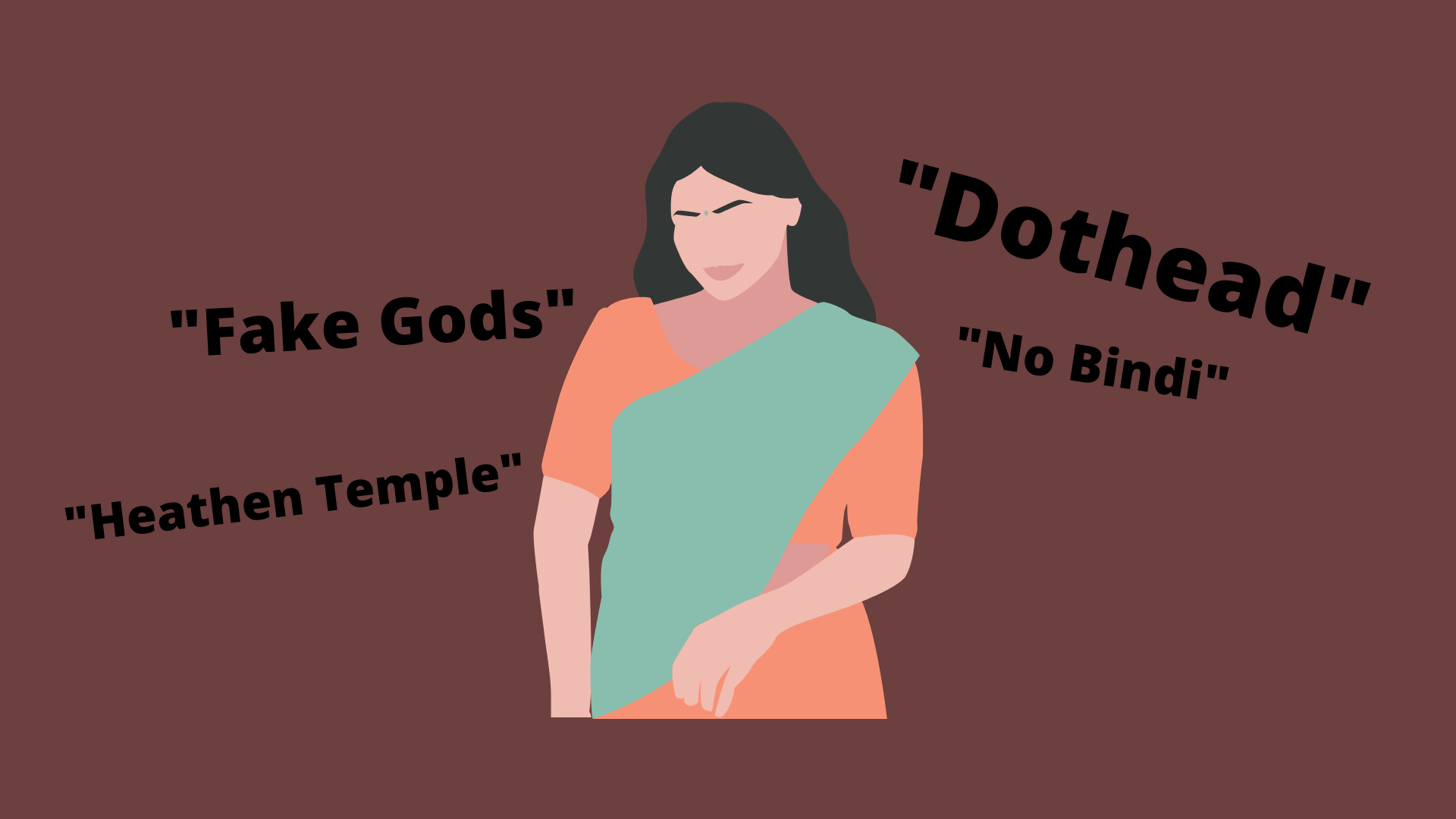In 2019, it was reported that Forsyth County, Georgia, had one of the fastest-growing Asian populations in the U.S., with at least 20,000 residents. This past September, a sign in Forsyth County said “no dotheads,” a slur used against Hindus, should be allowed in Atlanta. The poster was a small piece of cardboard that read “NO,” in big black letters with a red dot above it symbolizing a bindi, the traditional decoration worn by Hindu women on their foreheads.
“It just made me sick looking at it,” says a 14 year old, female-identifying Gwinnett County resident who identifies as Hindu. “The fact that people are so hateful towards another religion that they probably know nothing about hurts for someone who is a Hindu to see.”
As has been the case with many minority groups in the United States, the rise of the Indian American community in the United States has resulted in some isolated attacks. Threats on Hindus in the United States result from what author Khyati Y. Joshi calls “racialization of religion,” a process that begins when specific phenotypic characteristics associated with a group and attached to race in popular discourse become associated with a particular religion or religions. The constant and casual racism towards Hindus has led to Hindus being perceived as a distinct group, which contributed to preconceptions against them.
“Honestly, I think it’s a little odd,” says another 16 year old female identifying teen from Forsyth County who identifies within the Hindu Community about the sign. “Forsyth County has a huge Hindu population. The person who put those signs up must have known what the result of their actions would be like. I don’t feel scared or anything because of the sheer number of Hindu people in Forsyth County.”
Anti-Hindu hatred has a long deep-rooted history. For example, from 1975 to 1995, the “Dotbusters” were a dispersed hate group that attacked Hindus in New York and New Jersey. Also, in 1995, Pat Roberson, a religious, political commentator and an American media mogul, ridiculed Hinduism as “demonic,” leading to Indian Americans and representatives of various non-partisan advocacy groups slamming and challenging his remarks.
After the 9/11 terrorist attacks, Indian communities faced a series of violent hate crimes, xenophobic rhetoric, and jargon. A 2014 South Asian Americans Leading Together (SAALT) study reported “in 2001, 59% of Americans held favorable opinions of Muslims. In 2012, half of Americans reported discomfort with women in burqas, mosques in their neighborhoods, or Muslims praying in airports.”
This caused a significant escalation to the previous hatred of these groups that has continued up to this day. For example, a Hindu temple in north Texas was vandalized in April 2015, when obscene imagery was spray-painted on its walls, and in 2019, a Hindu Swaminarayan temple in Kentucky was vandalized by a group of Christians who spray painted ‘Jesus’ all over the exterior. Earlier this year, Hindusamata reported that a Minnesota church mobilized against the construction of a Hindu temple and wrote letters to the public calling it a “heathen temple” and saying that “Hindu gods are fake gods.”
“The issue is not so much Hinduphobia as it is white supremacy, these types of crimes can be done to anyone” says Sudha Malhotra, a Forsyth County resident I had the opportunity to speak with.
This one sentence really struck me and gave me some insight from another perspective. It is not only the Hindu religion that has faced backlash, it is anyone’s identity whom certain people tend to disapprove of.
“Many upper-caste (UC) Hindu Indians are using this incident to act oppressed when they’re not,” says the Forsyth County teen quoted earlier. “While this is not to be ignored, UC Hindus are not oppressed and have systemic advantages over lower-caste (LC) people and darker-skinned Indians. ”
It should be noted that Upper Caste Hindu people make up a little less than 20% of India’s population, yet they make up more than half of Indian American immigrants. Because of the economic inequality and discrimination they face in India, lower caste people are less likely to migrate to the United States.
As someone who has grown up in a highly religious household and been taught that the worship of God is something to be proud of and embrace, these attacks truly bring fear to myself and my Hindu or Indian community peers. Hinduism is something that is meant to bring people together spiritually and personally, not tear relationships apart.
These past actions show that this sentiment for Hindu and Indian groups has been a constant in our history for the last four decades and must be put to an end now.





Thought provoking article.